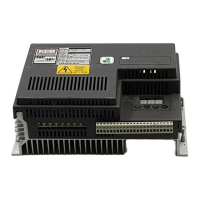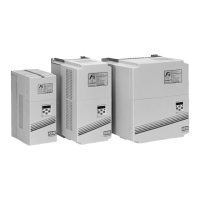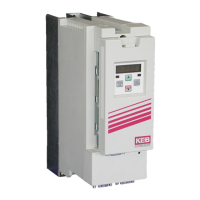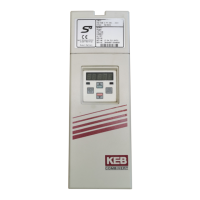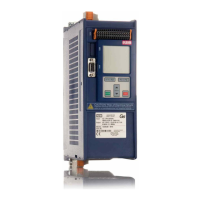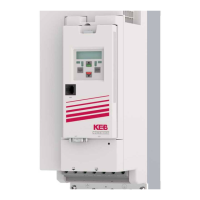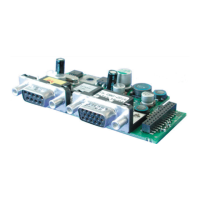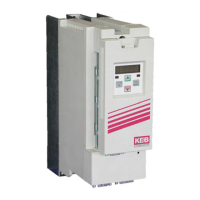107
The proportional gain of the speed controller is split into two values, one for
acceleration and constant run and one for deceleration. This provides the
greatest degree of exibility. The default values are set the same for both
and will work for most applications. However if the motor does not track the
speed command tight enough, then the value should be increased. If the
motor makes audible noise or vibration in the car, then the gain value should
be reduced. Adjustment steps of +/- 250 are reasonable.
Unit: 1
Value range: 1...32767
Default setting : 3000 Accel. , 3000 Decel. , 2000 Pre-torque
Refer to section 5.12.3 for adjustment information on A.LF.31 and d.LF.31.
The synthetic pre-torque gain setting is used to provide control during the
pre-torque phase only when LF.30 =5. In most cases it is not necessary to
adjust the proportional gain. However, if a vibration is felt in the car during
the pre-torque phase this gain can in uence it. Try values of 500, 1000, 4000,
and 6000 to determine whether or not there is any in uence. P.LF.31 is not
used when LF.30=3.
The integral gain of the speed controller is split into two values, one for
acceleration and constant run and one for deceleration. The default values
are a good staring point and will work for most applications. Higher integral
values can lead to pulsation during acceleration and deceleration.
Unit: 1
Value range: 1...32767
Default setting: 350 Accel. , 250 Decel. , 10000 Pre-torque
Refer to section 5.12.3 for adjustment information on A.LF.32 and d.LF.32.
The sythetic pre-torque gain setting controls the rate of the build of torque
and the stiffness of the motor as the brake releases only if LF.30=5. Once
the pre-torque timing is adjusted, this gain can be adjusted to control the
strength of the pre-torque. In general lower spring tension and lower brake
pick voltages result in a smoother transition of the load from brake to motor.
This gain should be adjusted as high as necessary to prevent the sheave from
moving during break release. Typical values are between 5,000 and 20,000.
If the value gets too high, vibration or audible noise in the motor may occur
during the pre-torque phase. Refer to section 5.12.4 for more adjustment
information. P.LF.32 is not used when LF.30=3.
Parameter Description - Control Settings
Kp speed accel.
Ki speed accel.
Kp speed decel.
Ki speed decel.
Kp speed synthetic
pretorque
Ki speed synthetic
pretorque

